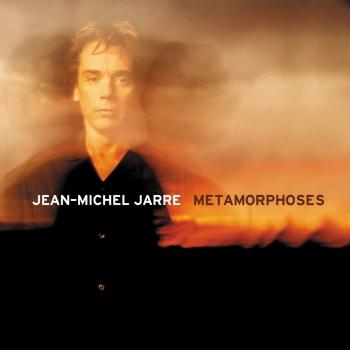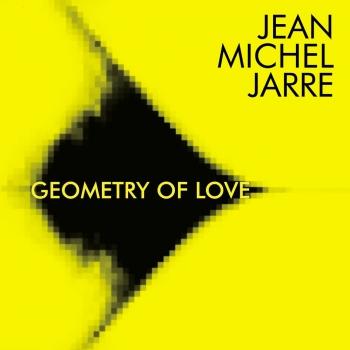
Equinoxe (2015 Remastered) Jean Michel Jarre
Album info
Album-Release:
1997
HRA-Release:
11.11.2012
Label: Sony Music CG
Genre: Electronic
Subgenre: Experimental
Artist: Jean Michel Jarre
Composer: Jean Michel Jarre
Album including Album cover
I`m sorry!
Dear HIGHRESAUDIO Visitor,
due to territorial constraints and also different releases dates in each country you currently can`t purchase this album. We are updating our release dates twice a week. So, please feel free to check from time-to-time, if the album is available for your country.
We suggest, that you bookmark the album and use our Short List function.
Thank you for your understanding and patience.
Yours sincerely, HIGHRESAUDIO
- 1 Equinoxe, Pt. I 02:20
- 2 Equinoxe, Pt. II 05:06
- 3 Equinoxe, Pt. III 04:59
- 4 Equinoxe, Pt. IV 07:05
- 5 Equinoxe, Pt. V 03:55
- 6 Equinoxe, Pt. VI 02:44
- 7 Equinoxe, Pt. VII 07:48
- 8 Equinoxe, Pt. VIII 05:08
Info for Equinoxe (2015 Remastered)
If Oxygène was a hymn to the air, Equinoxe was an ode to water; music that was fog, mist, almost organic. Jarre created in eighteen months a veritable electronic symphony of intertwining melodic themes. The electronics allowed him to evoke, not imitate the sounds of nature. He recreated them on a synthesiser like Fellini had recreated the sea or the sky at the Cinecittà studio, giving them a personal colour or rhythm.
One of the characteristics of Equinoxe is its slow-mo sound effects, seeming to stop time as its sounds melt into the electric heat. Jean Michel Jarre released Equinoxe in 1978.
As the follow up album to Oxygene, Equinoxe offers the same mesmerizing affect, with rapid spinning sequencer washes and bubbling synthesizer portions all lilting back and forth to stardust scatterings of electronic pastiches. Using more than 13 different types of synthesizers, Jarre combines whirling soundscapes of multi-textured effects, passages, and sometimes suites to culminate interesting electronic atmospheres. Never repeating the same sounds twice, it is obvious that the science fiction hype of the late 70's played a large part in the making of this album. Computerized rhythms and keyboard-soaked transitions scurry by, replaced by even quicker, more illustrious ones soon after. There is always a pulsating beat or a fluttering tempo happening somewhere in each of the tracks, which are titled as a numbered sequence one to eight. Each track harbors its own energy and electronic fleetness, but none are identical in sound or pace. So much electronic color is added to every track that it is impossible to concentrate on any particular segment, resulting in waves of synth drowning the ears at high tide. (Mike DeGagne, All Music Guide)
Jean Michel Jarre, organ, Mellotron, keyboards, synthesizer, ARP synthesizer, Oberheim synthesizer, vocoder, computer
Digitally remastered.
Jean Michel Jarre
Multifaceted artist, not only recording artist, creator and performer of unique outdoor concerts, Jean Michel Jarre is also composer and lyricist of mile-stone hits in his native France and composer of international movie soundtracks. He is also the first composer to introduce electronic music into the sanctuary of the Paris Opera House, with the ballet AOR in 1971. Between 1968 and 1972, after having worked with Pierre Schaeffer in the GRM (Group for Musical Research), he also composes and produces a series of electronic music pieces like The Cage, Deserted Palace…
In 1972, he composes the signature music for the International Festival of Magic.
During 1973-74 he composes and/or writes the lyrics for, and artistically produces, major French talent, Françoise Hardy, Gérard Lenorman and Christophe’s two key albums, Les Paradis Perdus and Les Mots Bleus.
He also signs the staging and direction of Christophe’s two concerts at the Olympia Theatre, in Paris.
1974-75 brings him to Los Angeles where he writes and produces two albums for Patrick Juvet, Mort ou Vif (« l’Enfant aux Cheveux Blancs », « Faut pas rêver ») and Paris by Night (« Où sont les femmes ? »). He works with Herbie Hanckock’s musicians and Ray Parker Junior.
Concerning his work on movie soundtracks, in 1972 he composes the original soundtrack for Jean Chapot’s Les Granges Brûlées starring Alain Delon and Simone Signoret and in 1978 Peter Fleischmann’s The Sickness of Hamburg.
Peter Weir asks him in 1979 to score Gallipoli, starring the debut actor Mel Gibson. In 1986 he contributes to Nine and a half weeks by Adrian Lyne starring Kim Basinger and Mickey Rourke.
In 2001, Jarre composes the original soundtrack for Qui veut devenir une star, the first feature film of young debut director Patrice Pooyard.
Jean Michel Jarre has also signed the music for a 1992 documentary-film directed by Jacques-Yves Cousteau, Palawan.
During 2001, he was commissioned by Match Télévision to create the sound design of the cable channel, and by Bang & Olufsen for the visual and sound design of their B & O Concept Store on the Champs-Elysées in Paris.
In the realm of visual arts, Jean Michel Jarre has also staged several video installations, the latest of them being presented in Avignon in 2000 for the Millennium exhibition on the theme of Beauty.
Apart from his activities directly linked to musical composition, Jean Michel Jarre is spokesperson for IFPI and has headed successfully the lobby for Internet copyright legislation before the European Parliament.
Jean Michel Jarre is also UNESCO spokesperson and Ambassador contributing to the awareness of two key UN projects “Water for Life” and “Education for all”. Further information about Jean Michel Jarre you will find on his homepage.
This album contains no booklet.















